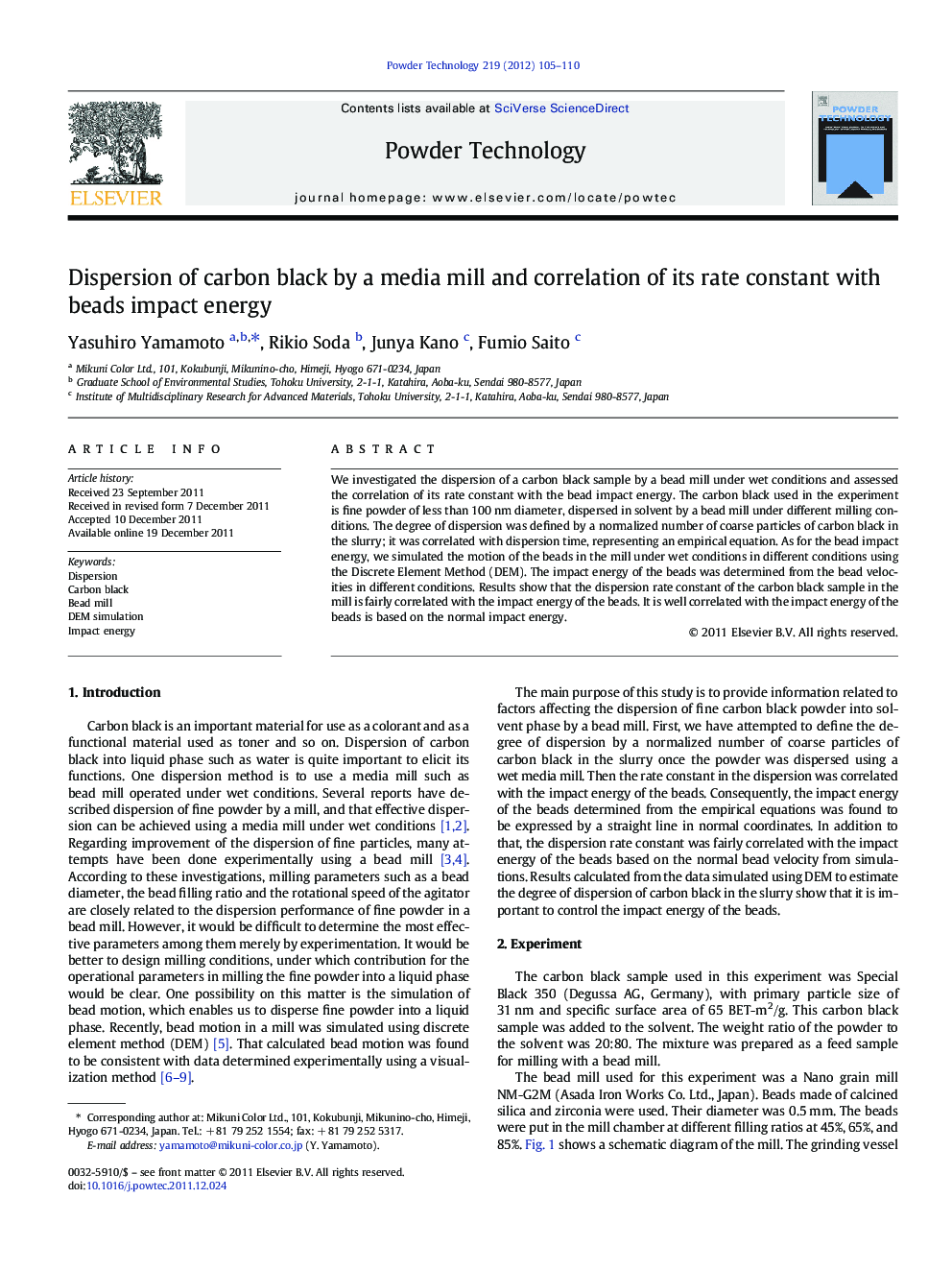| Article ID | Journal | Published Year | Pages | File Type |
|---|---|---|---|---|
| 237392 | Powder Technology | 2012 | 6 Pages |
We investigated the dispersion of a carbon black sample by a bead mill under wet conditions and assessed the correlation of its rate constant with the bead impact energy. The carbon black used in the experiment is fine powder of less than 100 nm diameter, dispersed in solvent by a bead mill under different milling conditions. The degree of dispersion was defined by a normalized number of coarse particles of carbon black in the slurry; it was correlated with dispersion time, representing an empirical equation. As for the bead impact energy, we simulated the motion of the beads in the mill under wet conditions in different conditions using the Discrete Element Method (DEM). The impact energy of the beads was determined from the bead velocities in different conditions. Results show that the dispersion rate constant of the carbon black sample in the mill is fairly correlated with the impact energy of the beads. It is well correlated with the impact energy of the beads is based on the normal impact energy.
Graphical abstractWe simulated the beads motion in the mill using the DEM, and the impact energy of the beads was extracted from the simulation. Results show that the dispersion rate constant of the carbon black sample is fairly correlated with the impact energy. It is well correlated with the impact energy of the beads based on the normal impact energy.Figure optionsDownload full-size imageDownload as PowerPoint slideHighlights► The dispersion performance is well correlated with the impact energy of beads. ► The dispersion rate constant would be correspondent to the dispersion performance. ► Dispersion performance of carbon black is improved by operating conditions.
